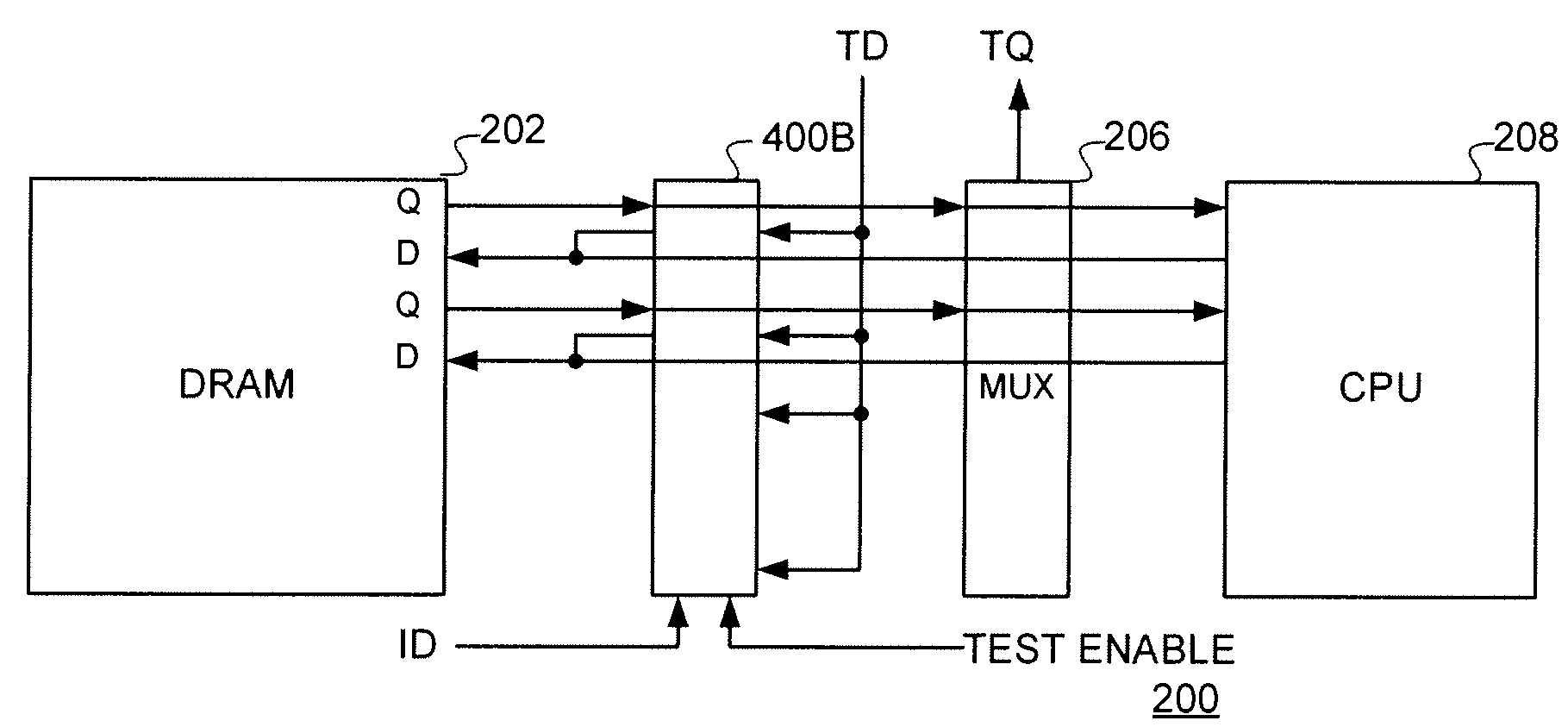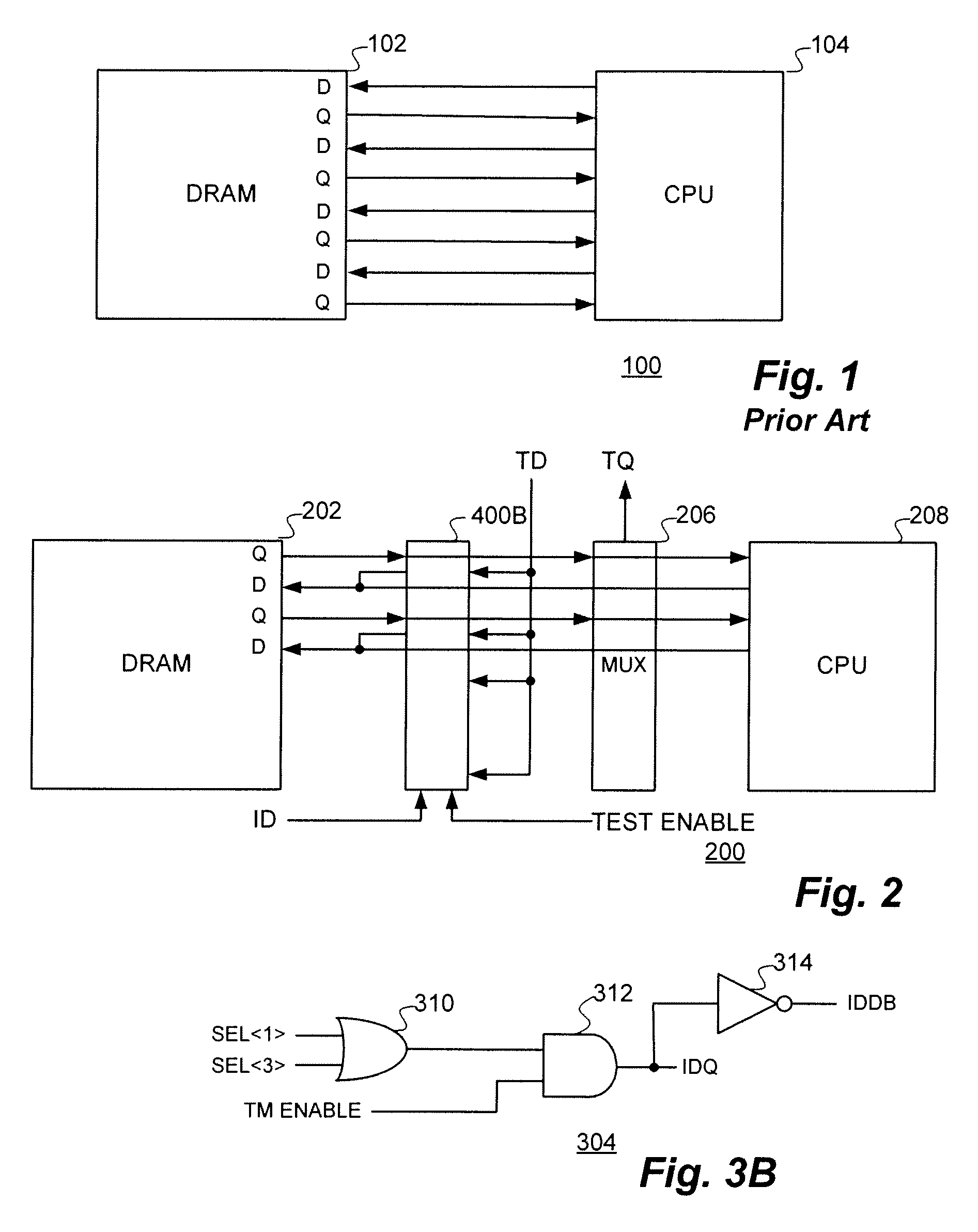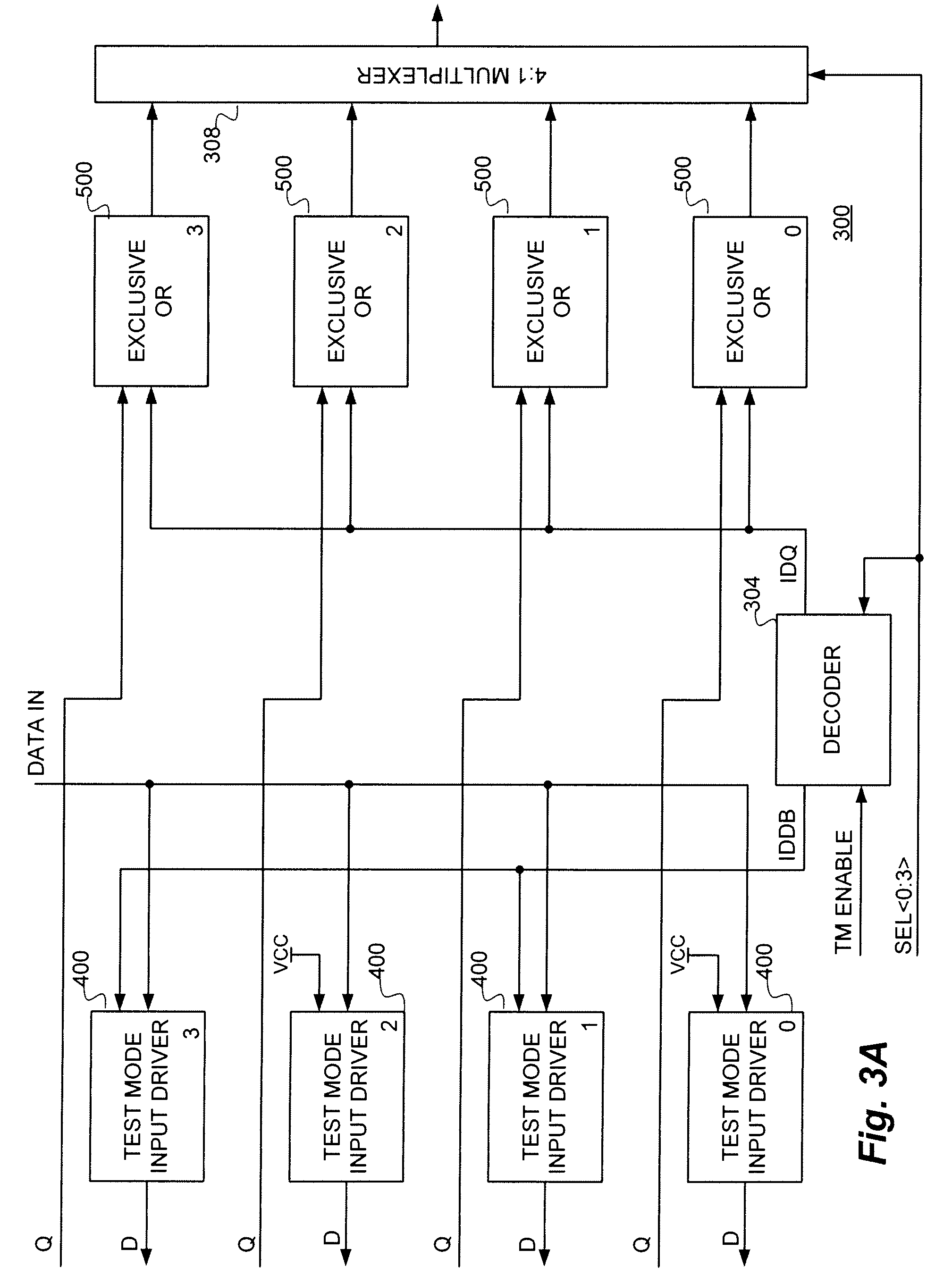Data inversion register technique for integrated circuit memory testing
a data inversion register and integrated circuit technology, applied in the direction of error prevention, digital transmission, instruments, etc., can solve the problems of inability to write data stripes from a single data input signal, lack of pattern capability needed to exercise the full memory array and data path, and difficulty in manufacturing testing of these wide i/o dram circuits. to achieve the effect of maximizing the probability of identifying failures
- Summary
- Abstract
- Description
- Claims
- Application Information
AI Technical Summary
Benefits of technology
Problems solved by technology
Method used
Image
Examples
Embodiment Construction
[0020]With reference now to FIG. 1, a simplified functional block diagram illustrative of a prior art circuit 100 interconnection of a DRAM 102 with a central processing unit (CPU) 104 by means of a number of data input (D) and data output (Q) lines is shown.
[0021]With reference additionally now to FIG. 2, a corresponding simplified functional block diagram of a representative testing configuration 200 is shown for implementing the data inversion register technique of the present invention. In this illustration, a number of test mode input drivers 400B and a multiplexer 206 are coupled between a DRAM 202 and a CPU 208. The test mode input drivers 400B receive an invert data (ID) signal and TEST ENABLE signal in addition to input test data (TD). As shown, the multiplexer 206 ultimately outputs the test data (TQ).
[0022]With reference additionally now to FIG. 3A, another simplified functional block diagram of a further representative testing configuration 300 is shown for implementing ...
PUM
 Login to View More
Login to View More Abstract
Description
Claims
Application Information
 Login to View More
Login to View More - R&D
- Intellectual Property
- Life Sciences
- Materials
- Tech Scout
- Unparalleled Data Quality
- Higher Quality Content
- 60% Fewer Hallucinations
Browse by: Latest US Patents, China's latest patents, Technical Efficacy Thesaurus, Application Domain, Technology Topic, Popular Technical Reports.
© 2025 PatSnap. All rights reserved.Legal|Privacy policy|Modern Slavery Act Transparency Statement|Sitemap|About US| Contact US: help@patsnap.com



